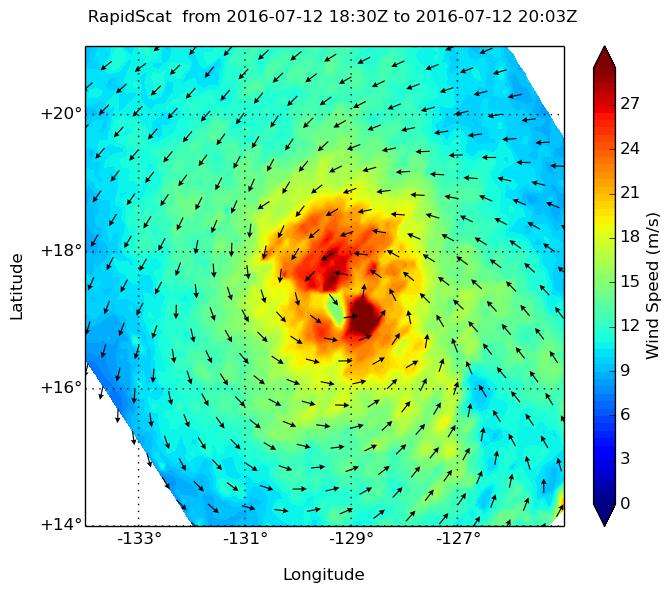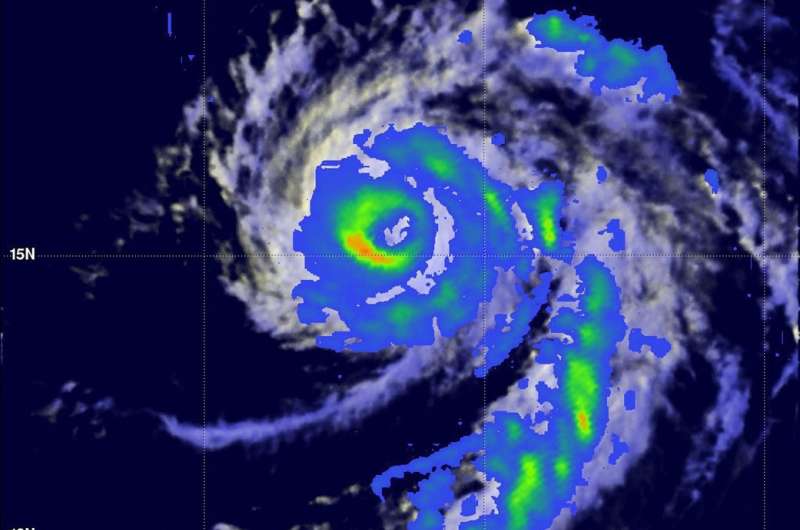NASA looks into Tropical Cyclone Celia's winds and rainfall rates

Tropical Cyclone Celia continued to generate heavy rains as it moved through the Eastern Pacific Ocean. NASA's RapidScat analyzed surface wind speeds while the GPM core satellite measured rainfall rates occurring within the storm.
RapidScat is a scatterometer instrument that flies aboard the International Space Station. It measures surface wind speeds and direction over open waters of oceans On July 12 RapidScat saw strongest sustained surface winds (red) occurring east of the center of Hurricane Celia. Those winds were in excess of 30 meters per second (67.1 mph/108 kph). Images from RapidScat data are made into images at NASA's Jet Propulsion Laboratory in Pasadena, California where the mission is managed.
The Global Precipitation Measurement (GPM) core observatory satellite twice flew almost directly above hurricane Celia in the eastern Pacific Ocean on July 12, 2016. The first time was on July 12, 2016 at 0011 UTC (July 11 at 8:11 p.m. EDT) and the second view was on July 12, 2016 at 1326 UTC (9:26 a.m. EDT). With both passes GPM's Microwave Imager (GMI) clearly showed the location of rainfall around hurricane Celia's well defined eye. The hurricane had maintained intensity during this period with sustained maximum wind speeds estimated at 80 knots (92.8 mph). With the first pass GMI measured rain in the southwestern side of Celia's eye wall falling at a rate of close to 33 mm (1.3 inches) per hour. GPM is a joint mission between NASA and the Japanese space agency JAXA.

On July 13 at 5 a.m. EDT (0900 UTC) Celia weakened to a tropical storm. It was centered about 1,410 miles (2,270 km) west of the southern tip of Baja California. Celia was located near latitude 18.3 north and longitude 131.2 west. Celia was moving toward the west-northwest near 12 mph (19 kph) and this general motion is expected to continue for the next couple of days. Maximum sustained winds have decreased to near 70 mph (110 kph) with higher gusts. Additional weakening is forecast during the next 48 hours. The estimated minimum central pressure is 987 millibars.
Celia is moving in the general direction of the Hawaiian Islands but is predicted to weaken to tropical depression intensity in a few days as it moves into the central Pacific.
Provided by NASA's Goddard Space Flight Center




















